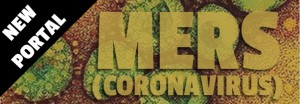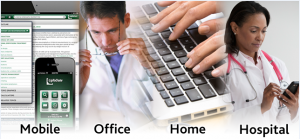 On May 2, 2014, the U.S. Centers for Disease Control and Prevention (CDC) confirmed the first case of Middle East Respiratory Syndrome (MERS) coronavirus in the United States. The virus was found in a man who had traveled from Saudi Arabia to Indiana at the end of April.
On May 2, 2014, the U.S. Centers for Disease Control and Prevention (CDC) confirmed the first case of Middle East Respiratory Syndrome (MERS) coronavirus in the United States. The virus was found in a man who had traveled from Saudi Arabia to Indiana at the end of April.
The Library’s MERS-CoV (Coronavirus) Portal provides information – from a variety of national and international sources – on the current state of the disease.
Note to PubMed searchers: CORONAVIRUS and CORONAVIRUS INFECTIONS are the Medical Subject Headings (MeSH) most often used to describe MERS articles. Many MERS articles are recent and not yet indexed, so search by keyword as well as by MeSH.
Twitter users may also choose to search for the following hastags (in order of use): #MERS, #MERSCoV, and #coronavirus.


